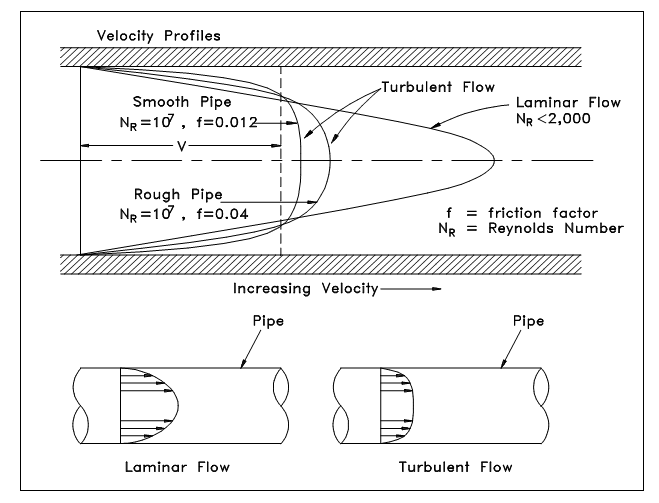Reynolds Number
The flow regime (that is, either laminar or turbulent) is determined by computing the Reynolds number of the flow (refer to the figure shown below). The Reynolds number, depend on studies of Osborn Reynolds, is a dimensionless number encompasses of the physical characteristics of the flow. The equation below is employed to compute the Reynolds number (NR) for fluid flow.
NR = ρ v D/µ gc
Here:
NR = Reynolds number
v = average velocity (ft/sec)
D = diameter of pipe (ft)
µ = absolute viscosity of fluid (lbf-sec/ft2)
ρ = fluid mass density (lbm/ft3)
gc = gravitational constant (32.2 ft-lbm/lbf-sec2)

For practical aims, when the Reynolds number is less than 2000, the flow is laminar. When it is greater than 3500, the flow is turbulent. The flows with Reynolds numbers ranges from 2000 and 3500 are at times termed to as transitional flows. Most of the fluid systems in nuclear facilities operate with turbulent flow. The Reynolds numbers can be conveniently determined by using a Moody Chart.